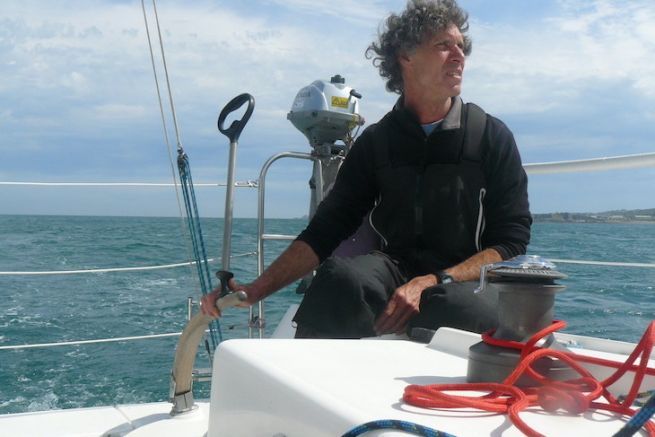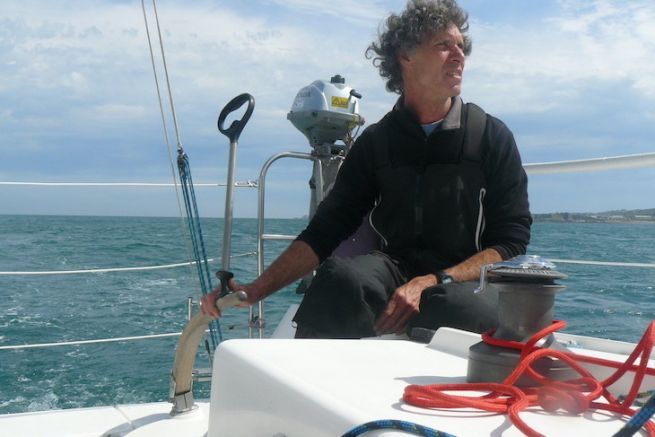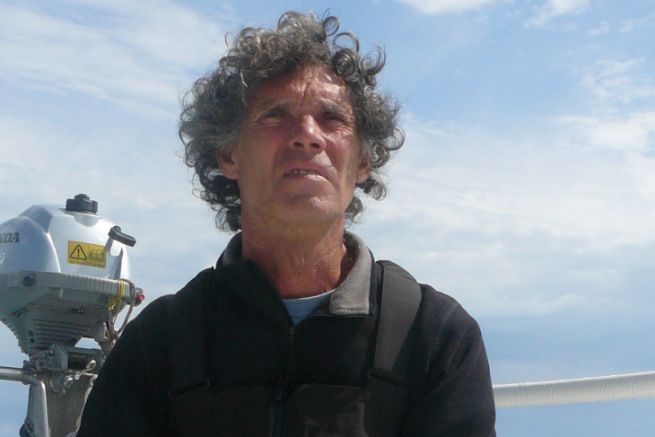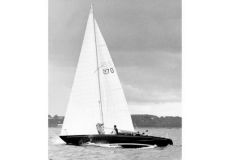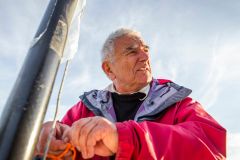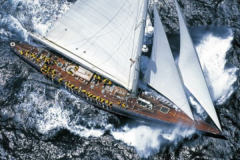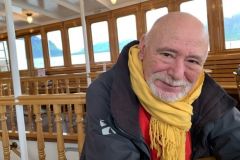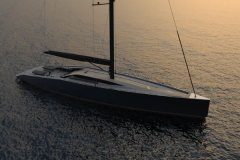A career in ocean racing
Pierre Rolland is first and foremost an ocean racer. At the origin of his career, his taste for sailing races. Although he dreamed of joining the Figaro circuit, he did not have the means to do so. He then decided to participate in the 1987 Mini Transat and built his own boat, according to his own plans.
"I started sailing in the harbour of Brest when I was 12 years old. I was doing challenges in the summer. At that time, things were simple. I was racing on Muscadet. Then during the following years, I alternated between cruising and ocean racing. The Figaro being out of my budget, I had the project to participate in the Mini Transat. With small budgets, we could participate."
Pierre Rolland is thus participating in his first solo transatlantic race on his boat Petit Poids.
"It was a complete apprenticeship. I designed it, built it and then sailed it across the Atlantic. I had really enjoyed it."
Two years later, he decided to do the Mini Transat again, trying to do better than the first time. So he started again in 1989, on the same boat, which he had optimized. But it is on the race Vannes - Les Açores - Vannes - of which two editions were held in even years - that his taste for design will develop.
"I participated in both editions. Talking with other racers, we thought it wouldn't hurt to get together to build better boats."
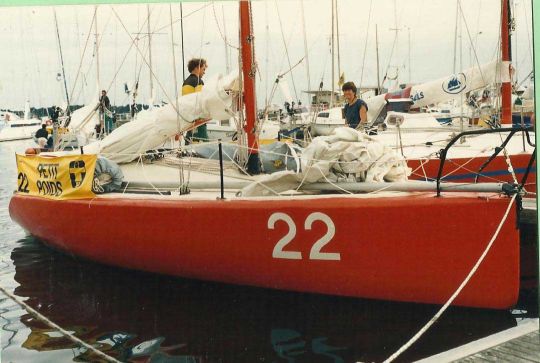
A second Rolland plan, victory in the 1993 Mini Transat
Pierre Rolland designed a second Mini 6.50, which he built in Vannes with other Mini racers. 4 examples were produced. In 1993, he participates once again in the mythical transatlantic race on this boat he just built. Thierry Dubois, one of the other competitors, also sails on this 2nd Rolland design.
"This edition has been very complicated. There is a very, very big fight. It was a storm in the Bay of Biscay. Today, we would not leave in these conditions. There were distress beacons triggered, boats turned over, a skipper who disappeared... I was in the leading group when the race organization asked us to return to France. So I went to Spain, which was closer to me.
Thierry Dubois did not hear the recall and continued, finishing the first stage. And he ended up winning the Mini Transat on this boat, Amnesty International, my second design. At that time, I had not considered a career as a naval architect. But I'm glad this boat won."
Finally, 4 other examples of this 2nd Mini are still born for the following edition. Pierre Rolland made a name for himself in ocean racing.

A first production Mini for the Structures yard, the birth of a career
For this same edition of 1995, Pierre Rolland is contacted by the Breton shipyard Structures (father of the famous Pogo) which wishes to manufacture a Mini 6.50 of series.
"The boss of the Structures yard contacted me. He knew that the molds for my 2nd Mini were in Loctudy. Bernard Stamm had retrieved them to build himself an example. He was interested in using them to build a serial Mini. At that time, the only production boat was the Coco, an old Harlé design with a monosafran, all in cast iron. I thought it wasn't too difficult to make a more modern boat with double rudders, a bulbous keel, more canvas, wider... That's how my career started, by designing the Pogo 1."
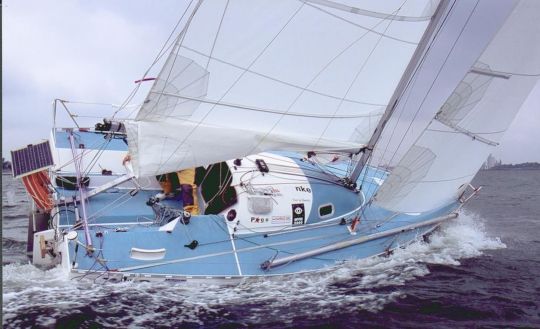
A passionate self-taught man
Like all architects of his time, Pierre Rolland was self-taught. He holds a BTS in mechanical manufacturing, but nevertheless masters industrial drawing. It is by reading and documenting that he learns hydrodynamics, structural calculations, etc.
"Harlé, Joubert-Nivelt, none of them had degrees in naval architecture. At that time, we were self-taught, with basic training. On the technical side, until the Pogo 1, all the drawings I made were by hand. There was no computer for 3D drawings yet. It was done on tracing paper, with smoothing. We drew to scale 1. It worked, it just took more time. I started using software in 1995."
A history of opportunities
In addition to the Mini 6.50, Pierre Rolland will be known by drawing the plans of a famous 60 feet, the Superbigou of Bernard Stamm.
"Bernard Stamm had built a 6.50 proto from the molds of my second design and had finished 3rd in the 1995 Mini Transat. Two years later, he contacted me to draw the plans for a 60-footer under amateur construction."
The deal is clear, this mission will be voluntary, just like the work site.
"It was interesting to get involved in this associative project, with a lot of people, volunteers. On the other hand, in terms of calculations, it was a bit hot. Going from a Mini 6.50 to a 60-footer, it's not the same story."
Pierre Rolland then approached the Brest-based structural design firm HDS (now Gsea Design), created by Hervé Devaux.
"At the time, he was doing all the structural calculations for the "state-of-the-art" boats. He had been working for two years with a young engineer, Denis Glehen, who was passionate about sailing. He has since worked for the America's Cup and runs the company. He was a beginner, but decided to embark with us in the adventure, also as an author. René Coleno, technical director of Les Glénan, helped us on this project with a 3D software that we had more or less developed together. The boat was finally well born since it raced again this year (Editor's note: Pip Hare's Medallia in the 2020/2021 Vendée Globe)."
This experience added to the architect's reputation. Although Superbigou did not compete in the Vendée Globe, he did set the Atlantic record in 2001.
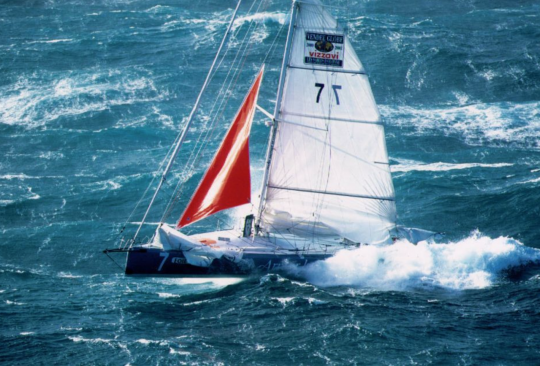
Racing-cruise boats for Breton shipyards
Finally, Pierre Rolland continued his career by designing boats for the Marée Haute, IDB Marine and GL Composite shipyards in the South of France.
"I created the whole series of Bongo, Django, Fabulo... I have always worked with people I met on the docks. I met Denis (editor's note: Bourbigot, IDB Marine's boss) on the Azores, Serge (editor's note: Calvez, Marée Haute's boss), ordered a prototype in molded wood. I never canvassed
But once again, it was the Structures shipyard that gave him a start with the Pogo 8.50. This boat will make him famous.
"After the Pogo 1, Structures wanted to build a bigger, faster, and somewhat fun cruising boat. There was nothing on the market at the time. There were either cruising boats or IOR type boats (editor's note: pre-ORC rating) to race between 3 buoys. It worked well upwind but not downwind. All the racing boats were very much influenced by this rule."
In 2000, the Pogo 8.50, the first cruiser inspired by the Mini series with its double rudders and its very open cockpit made its first tacks.
"I continued to decline this kind of boat, more or less spartan. Today, when you take a Django or a Mojito, they are comfortable, light and allow you to cruise comfortably. The first ones were more "agricultural". They still sail and the people who own them are super happy."
In Pierre Rolland's portfolio, therefore, only sailboats, including a multihull, the only one of his career. He draws for a friend built the prototype of the Bongo, a folding trimaran of 8 m for cruising. Finally, the Bandit 800 is built in series, 5 or 6 copies.
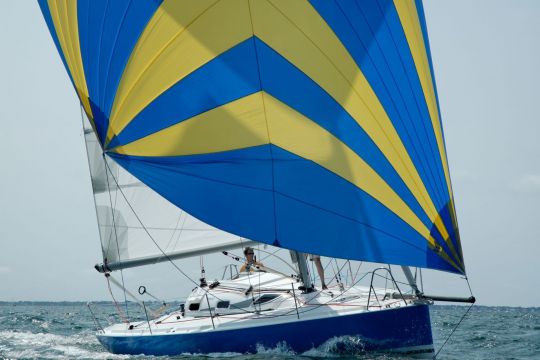
Ocean racer and naval architect
Although he designs boats, Pierre Rolland has not given up his first love, ocean racing. Thus, he has always worked alone, associating himself with other architects - Pierre Delion in particular - for large-scale or one-off projects.
"I function like Sam Manuard, I'm on my own. We were both ocean racers. I did the Solitaire du Figaro four times. I didn't choose to become a naval architect. And being a full-time naval architect meant giving up sailing. Today, I don't race anymore. My last race was the 2009 Mini on a D2, my 3rd Mini of the series. I've always sailed the boats I designed."
Favourite work sites
At the age of 60, Pierre Rolland is done with one-offs - projects that are too complicated financially speaking - concentrating on his collaborations with the IDB Marine and Marée Haute shipyards. He also built his own 12-meter cruising boat, designed from a Fabulo hull.
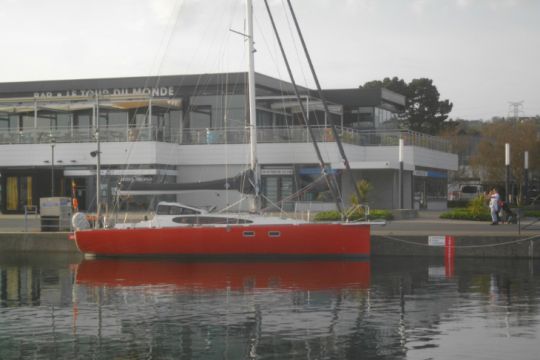
"It was close to my heart to build a cruise ship. It's been in the water since the end of 2020, and I'm polishing it up. We've already done two trips with it. It is built on the hull molds of the Fabulo. But I did something else for the deck and the fittings. It's a fast cruising boat to go for a walk."
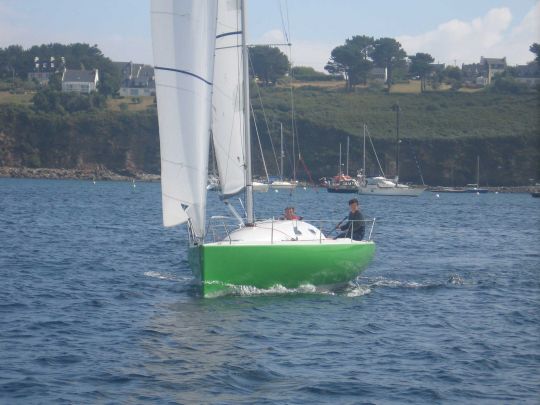
What advice do you have for becoming a naval architect?
"He must have been boating. That's better. Cruising or racing. You can start with racing and then design cruising boats, but sailing experience is key. Then a technical background is not stupid. It's better to have gone to engineering school rather than art school, even if some people have done so. Or to have done a DPLG school of architecture. Most of them are now engineers. There are few specific schools, like for DPLG architects. The only thing that defines a naval architect is the fact that he draws boats.
He must also be able to synthesize and listen to others. The birth of a boat is a team effort. It takes an architect, a shipyard or a client and calculator."
